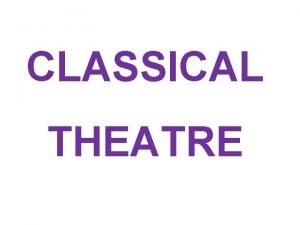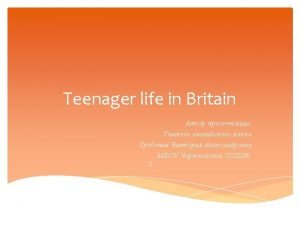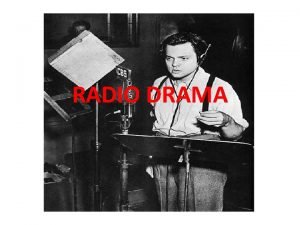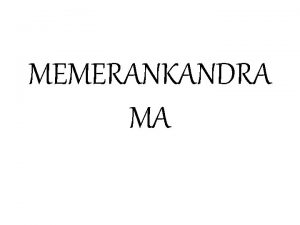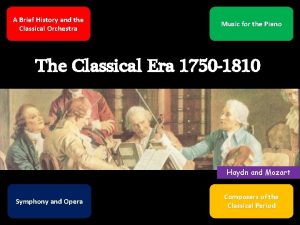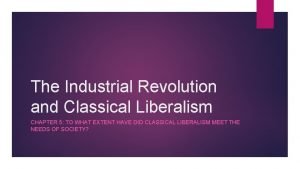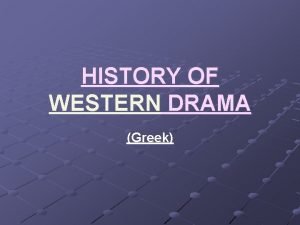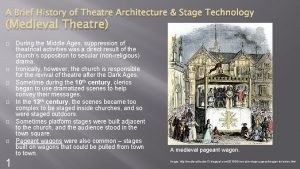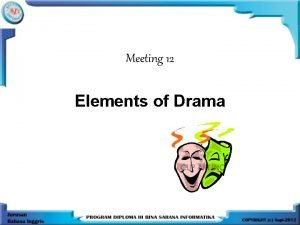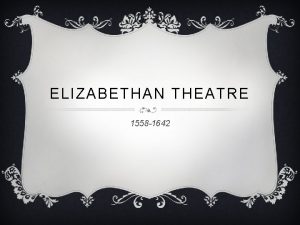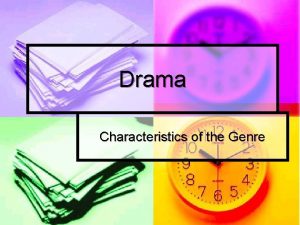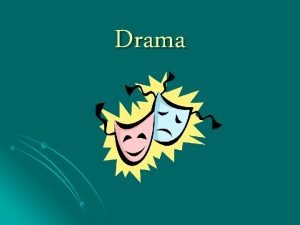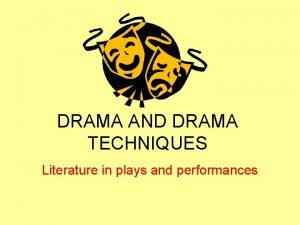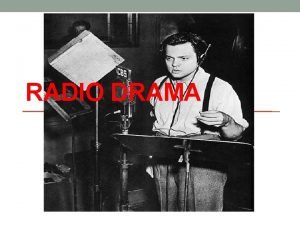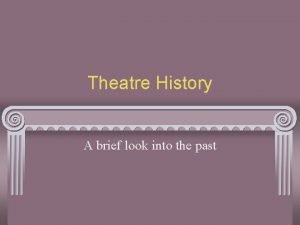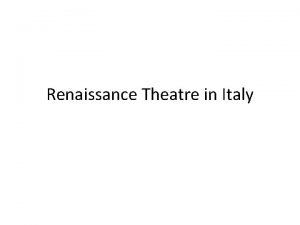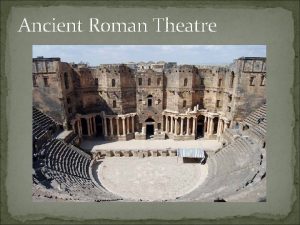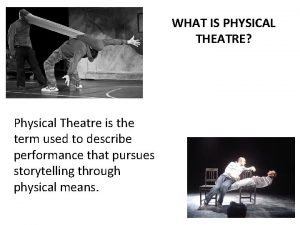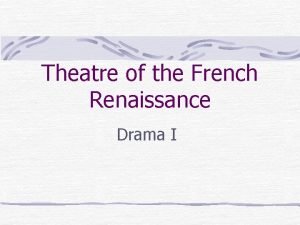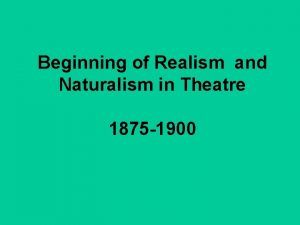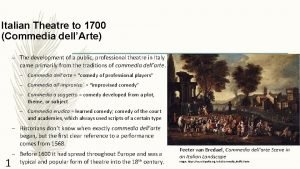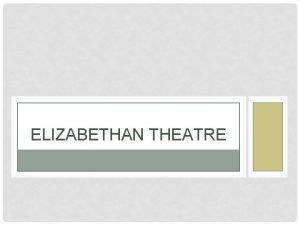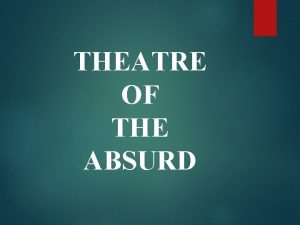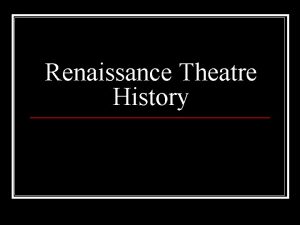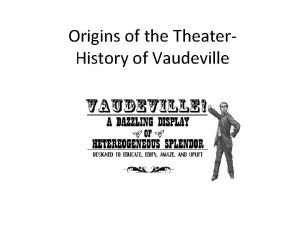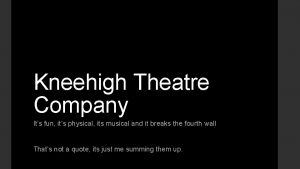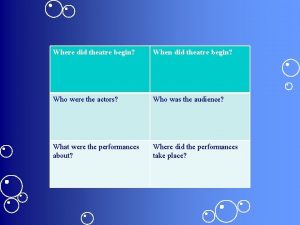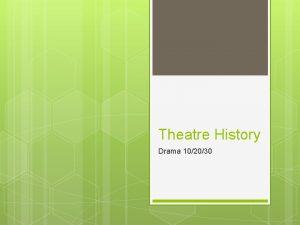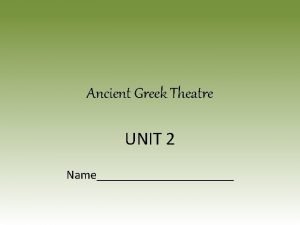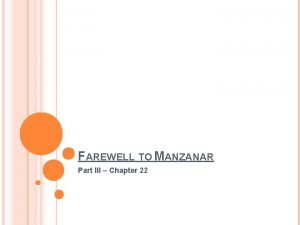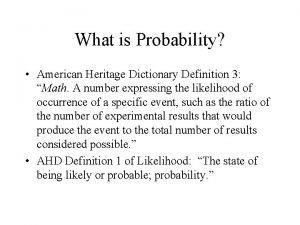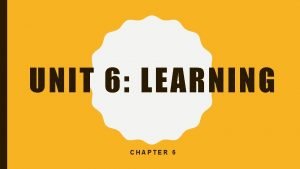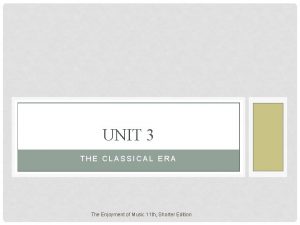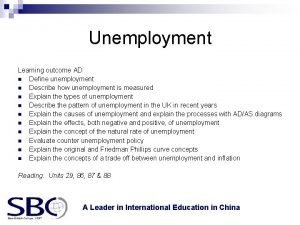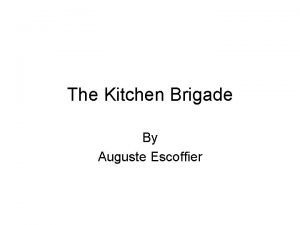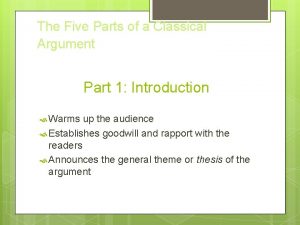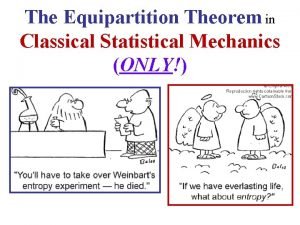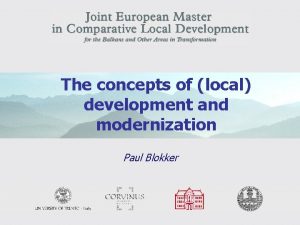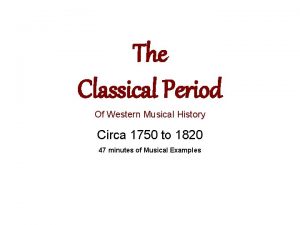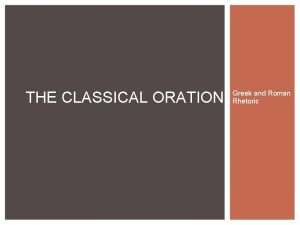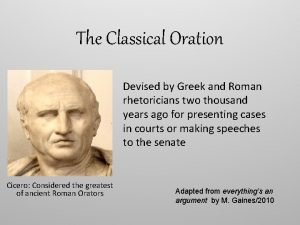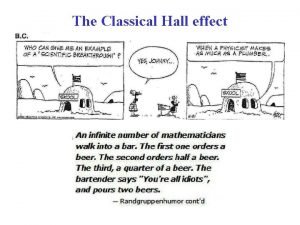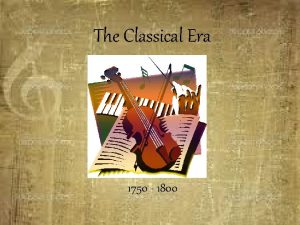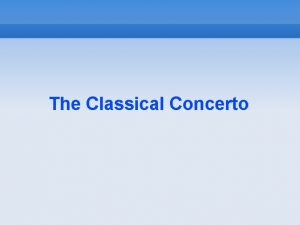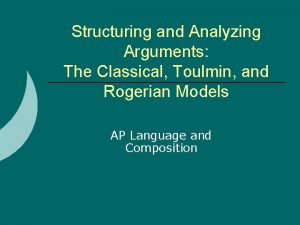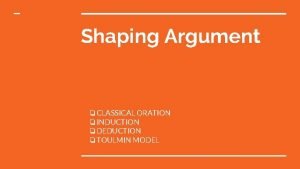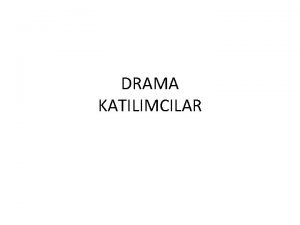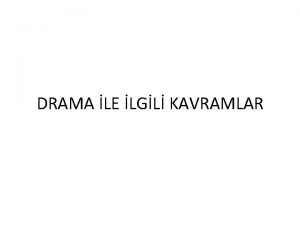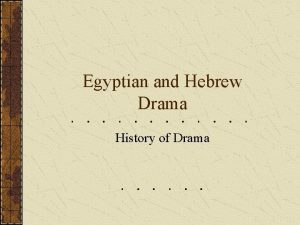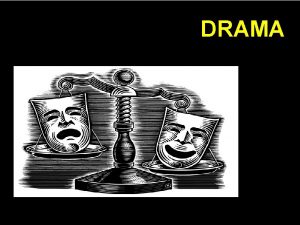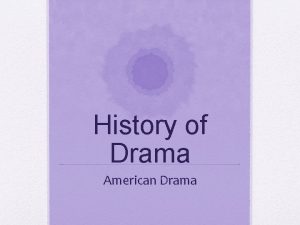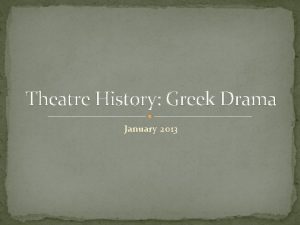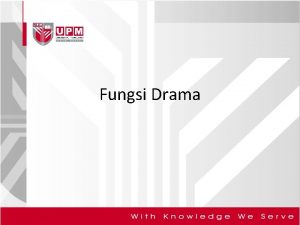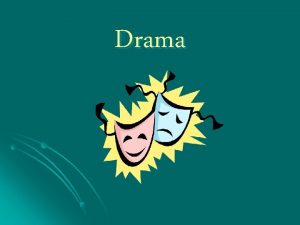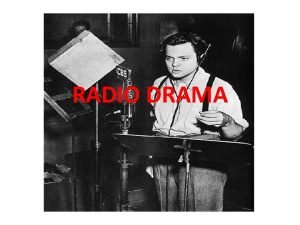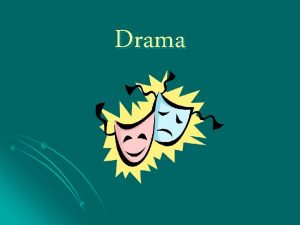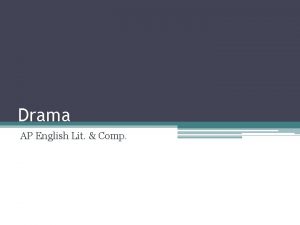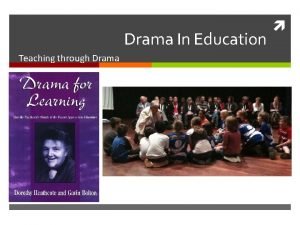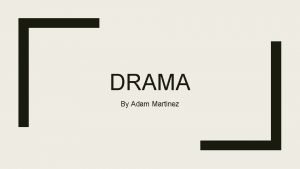Theatre History Drama 102030 Classical Theatre When did




































































- Slides: 68

Theatre History Drama 10/20/30

Classical Theatre When did theatre begin? Ritual played a role in the development of drama in the days of early people. Ancient societies used ritual to embody their understanding of the human condition and of the world around them.

Classical Theatre Ritual had a religious purpose, and instructive purpose (teaching), it was also a form of entertainment. Common elements are found in ritual - music, dance and elaborate movement, mask and costume.

Classical Theatre 1200 BC in Greece, the "Cult of Dionysis" practiced ritual celebrations of fertility, which over time altered and became Spring rituals with theatre at the centre of the celebration.

Classical Theatre A key part of the rites of Dionysus was the dithyramb performed by a chorus of 50 men dressed as satyr, playing flutes and drums, dancing and chanting

Classical Theatre In 500 BC we see the beginnings of Western theatre in Athens (2, 000 years before Shakespeare!) with the spring festivals drama competitions featuring plays of Tragedy and Comedy.

Classical Theatre Ancient Athenians created a theatre culture whose form, technique and language are used today. Plays written at that time are still regularly performed today. Thespis added an actor to interact with the chorus, and won the first drama competition in 534 BC, thus are actors to this day called "thespians".

Classical Theatre Aeschylus is considered the earliest playwright & introduced the idea of an antagonist. Sophocles added the concept of a third actor to the play. Euripedes and Aristophanes developed plays with more realism and dialogue.

Classical Theatre _ competitions drew as many as 30, 000 spectators. _ plays were performed in the day time (no electric lights!) _ actors wore masks - some say which helped to amplify the voice and show characters through exaggerated features.

Classical Theatre _ there were no costumes or sets, the focus was on the chorus and later, the actors. • _ only men acted. • _ tragedy (literally goat song) told a story intended to teach religious lessons, and the right and wrong path in life.

Classical Theatre _ tragic protagonist is the one who refuses to accept fate, either out of weakness of strength. _ examples are: Oedipus Rex, Agamemnon, Orestes. . _ Aristophanes wrote comedy - a type of lampoon of high brow culture.

Classical Theatre _ comedy relied on satire, topical issues of the day and made fun of celebrities (namely tragic writers). _ classic comedy types were born of this time, such as the miser, the grouch, the arrogant, etc and relied on stories of mistaken identity, romances and situational humour.

Classical Theatre _ the end of Greek times was heralded by the death of Sophocles, the arrival of the Spartans and times of war.

Medieval Theatre was held in a kind of suspended animation for many centuries. Wandering bands of acrobats, dancers, singers, wrestlers, story tellers helped to preserve theatre skills. Often these groups were disapproved of and attacked by the Church. Christians were strictly forbidden to attend theatrical performances, or appear in them.

Medieval Theatre was eventually to be reborn out of Church ritual. Plays began to develop out of sung portions, known as tropes, of early Christian festivals. Bible stories were acted out in the churches. Soon the action became too big for a church building, and it moved outside.

Medieval Theatre The next step was for the new homeless outdoor theatre to find a building. Plots eventually started to move away from the Bible through the influence of comedy. Satan was typically a comic character, as were the shepherds.

Medieval Theatre This led on to a tradition of plays about abstract vices and virtues. These plays tended to be done in cycles, and were often known as mystery plays. Everyman is the best known. One act comedies were also becoming popular, deriving from comic elements in Church plays.

Medieval Theatre Performances were now often staged in galleried inns, such as the George inn Southwark, with action taking place in a central courtyard.

Shakespearean/Renaissance _ the Renaissance is the name given to a period of history that lasted from about the 14 th, 15 th and 16 th century (between the Middle Ages and the Industrial Revolution). _ the Renaissance began in Italy about 1300, and spread throughout Europe over the next 200 years.

Shakespearean/Renaissance _ it swept away customs and institutions that had dominated Europe for a thousand years. _ meaning "rebirth", it marked the transition from the medieval world to modern thinking. _ this era marks the work of many great writers, poets, artists, composers and scholars.

Shakespearean/Renaissance _ the Elizabethan Age was named for Elizabeth I, Queen of England, who ruled from 1558 to 1603. _ Shakespeare lived 1564 to 1616, (he was born the same year in which Michelangelo died). _ Other playwrights of note are Christopher Marlowe and Ben Jonson, and in later years, Moliere.

Shakespearean/Renaissance _ Milton and Donne are poets of note from the period. _ leading up to this time, theatres had been closed for about a thousand years - the church believed it to encourage sloth and viewed entertainment as sinful.

Shakespearean/Renaissance _ travelling troupes, fairs and puppets shows moved from town to town as theatre was banned. _ the first theatre, Theatre, was built in London in 1576 by James Burbage. • Theatre was modelled after the inns in which bible performances migrated to in the medieval times. • _ other theatres, The Curtain, The Rose, The Globe, and The Fortune open in the following years.

Shakespearean/Renaissance _ 1592 - 94, theatre is closed often with the spread of the plague. _ in 1590, plays had little more claim to literary distinction than comic books do today. _ Shakespeare wrote for all people and his work has had a huge impact on the development of language.

Shakespearean/Renaissance _ some 1, 500 new words in the English language are accredited to his work.

Shakespearean/Renaissance Positions in the Theatre Company Player - the main actors, they were also "sharers" which meant they held shares in theatre and were paid from the profits.

Shakespearean/Renaissance Hired Men - other actors hired on to fill parts, were paid a wage and did not receive profits. Young boys apprenticed with the company as "gophers" and played the roles of women. They were not paid much.

Shakespearean/Renaissance Book Keeper - person hired to copy the play (by hand), and the parts for each actor, and an outline which was pinned up backstage for actors as a guide. Actors would only receive a copy of their specific part, not the entire play. The play was carefully guarded and locked up to prevent it being stolen.

Shakespearean/Renaissance Tiremen - a very important position in the company. This person was responsible for all of the costumes. Costumes were worth a lot of money (often donated cast offs from the nobility) and were treated very carefully. With no set to rely upon, the actors were transformed through costume.

Shakespearean/Renaissance Writer - hired to supply plays. Play writers were known as poets, because all serious plays were written in verse. They might be asked to write new plays, or work on someone elses play - just a job like any other. Not particularly well paid either.

Shakespearean/Renaissance Stage Keeper - responsible for cleaning the stage and for carrying the props on the stage. Musician - hired to play sackbuts (like trombones) and drums. Music helped provide a set for the scene, and added emotional qualities.

Shakespearean/Renaissance Gatherer - responsible for taking money from audiences. People paid a penny to stand, an extra penny to sit, and a third penny for a cushion in the upper balcony.

Decline of theatre in the 1600 s: Then as suddenly as theatre had gloriously flowered, it went into decline. By Shakespeare's death in 1616 it was really all over. Then came the Civil War, and the rule of Parliament, when the puritans banned theatre. Many theatre buildings, including the Globe were demolished, and theatre was supressed for eighteen years.

Decline of theatre in the 1600 s: Banned performances of a sort continued at the Red Bull Theatre, but raids during performances ended with "the marching away of all the actors by soldiers, bearing their clothes on their pikes" (Cromwell, Our Chief Of Men by Antonia Frazer P 465).

Decline of theatre in the 1600 s: By the time Charles II returned to the throne in 1660 nearly all the old actors were dead. It took a long time for theatre in England to recover.

Neo-Classical Theatre _ Classicism is a philosophy of art and life that emphasizes order, balance and simplicity. _ Ancient Greeks were the first great classicists - later, the Romans, French, English and others produced classical movements. _ the Restoration period marked a Neo. Classical movement, modelled on the classics of Greece and Rome.

Neo-Classical Theatre _ reason and restraint became the standard for writing. _ John Dryden became the leading poet, critic and dramatist – upholding common sense, moderation and conformity as the ideal. _ Charles II encouraged new playhouses to be built and a renewed interest in drama. _ noted for elaborate scenery, costumes and lighting.

Neo-Classical Theatre _ women for the first time were allowed on stage to act! _ actors employed highly particular ways of standing, speaking and gesturing. _ two types of drama: 1) the heroic tragedy and 2) the comedy of manners.

Neo-Classical Theatre The Heroic Tragedy _ heroes and heroines faced exaggerated conflicts between love and honour. _ characters expressed noble ideals in high sounding speeches (couplets). _ example: Dryden, All for Love, based on Shakespeare's Antony and Cleopatra.

Neo-Classical Theatre The Comedy of Manners _ pictures the carefree, immoral world of the aristocracy. _ brilliant, witty comedies.

Neo-Classical Theatre _ "virtue" comes form succeeding in catching a lover or cuckolding a husband without getting caught. _ "honor" comes from reputation, not integrity. _ "witty"—saying things in clever ways. _ influenced by the comedies of Moliere in France. _ example: Tartuffe, by Moliere; or The Country Wife, by Wycherley.

Realism & Contemporary Theatre _ the 19 th century began a period characterized by naturalism and realism. _ playwrights such as Ibsen, Chekhov, Shaw, and Strindberg led the way in this new type of theatre which reflected a language and style more natural to real life - excess and melodrama play lesser role.

Realism & Contemporary Theatre _ actors began to use the "fourth wall", imagining a wall where the audience sits, keeping the belief entirely in the scene and not speaking to the audience.

Realism & Contemporary Theatre _ Stanislavski developed Method Acting for the new theatre. The "Method" requires actors to approach their work from a personal response, identifying the psychological and emotional life of a character.

Realism & Contemporary Theatre Stanislavski created seven steps to building a character. These are: Who Am I? Where Am I? When Is It? What Do I Want? Why Do I Want It? How Will I Get It? What Do I Need To Overcome?

Realism & Contemporary Theatre _ playwrights were concerned with social and economical problems of the day - rather than provide an escape, theatre engaged in discussion and illumination. _ playwrights gave: characters specific stage directions; characters are individuals - not stereotypes, heroes and heroines; detail to physical appearance of character.

Realism & Contemporary Theatre _ Theatre repetoire also expanded to include burlesque, music halls and lyric opera. The Industrial Revolution brought more people into the city and there was a call for more popular "vulgar" entertainment.

Realism & Contemporary Theatre _ in the early part of the 20 th century, an artistic revolt begins against the commercial stage. Similarly, artists, musicians and dancers are experimenting further with the concept of art.

Realism & Contemporary Theatre _ two directions were: 1) increasingly graphic and more sophisticated forms of realism; and 2) move into symbolism and non-illusionistic forms of theatre. Both involve experimentation in aesthetic and technical aspects of theatre.

Realism & Contemporary Theatre _ increasing use of experimental sound, lighting, costume and innovation in design of sets. _ theatre played many roles: sometimes meant to capture the inner landscape of the mind and the collective unconscious; or to move people to social action; or to reexamine older, alternative traditions in the East; to explore national identity; or to provide drama in education.

World Theatre _ Bunraku is a form of Japanese puppetry and storytelling. _ the form goes back about 1, 000 years but became most popular about 300 years ago. _ it is enjoying a revival today in modern times, but is not the national passion it once was. _ tells old tales, sometimes stories about history, is very traditional.

World Theatre _ often involves confucian teachings(ie: loyalty over personal feelings). _ the artists strive for realism in the puppets. _ the puppets are about a metre tall, may have moveable eyes, eyebrows and jaws.

World Theatre _ may take three puppeteers to move one puppet. _ musicians played an important role in the play.

World Theatre _ Noh is a form of Japanese theatre. _ highly stylized performances. _ developed in the 1300's.

World Theatre _ 80 different characters in traditional Noh theatre _ slow-moving, dignified and elegant. _ performers use masks, made of wood. _ each mask shows the mood and character of the part. _ a chorus chants much of the story to music of a flute and drums

World Theatre _ Kabuki dates back to the 1600's. _ dance-dramas which are similar to Noh, but is somewhat livelier and easier to understand.

World Theatre _ Beijing Opera (also called Peking Opera) has existed over 200 years. _ it is regarded as the highest expression of Chinese culture. _ there are thousands of pieces, inspired by the history and literature of China (and some from the west).

World Theatre _ involve elaborate costumes and painted faces to represent different characters. _ yellow and white = cunning; red = upright and loyal; black = valour and wisdom; blue and green = rebellious heroes; gold and silver = mystic or supernatural.

World Theatre _ it is interesting to read up on China's Cultural Revolution to see the effect government has had on culture and it's people. _ Indonesian Shadow Puppets are made from flat shapes out of leather or wood. _ pieces are attached to sticks for movement.

World Theatre _ the puppeteer sits in back of a white screen and moves the puppets to enact the story. _ a lamp throws the shadow of the puppets onto the screen. _ the puppeteer tells the story and speaks the part of each puppet.

World Theatre _ Brazil's Theatre of the Oppressed has gained international recognition for it's political style. _ Augusto Boal, the director, believes completely in the transformative power of theatre. _ using both actors and no-actors, they move theatre into the streets in guerilla fashion.

World Theatre _ it can take on an invisible form, in the street, masquerading as "real-life" discussion of current political issues (in a repressive regime this activity can be seen as very dangerous). _ as word of Boal's work spread, other groups formed around the world and took on various forms - all using theatre as an agent for change and activism.

Commedia del Arte _ comedy developed in the 16 th century in Italy. _ modern influence can be seen in troupes such as Monty Python's Flying Circus and Kids in the Hall (Canadian), and even Bugs Bunny. _ is based on timing, physical comedy, mask, improvisation and the importance of big, broad characterizations.

Commedia del Arte _ stock characters include: Pedrolino, Arlecchino, Gratiano, Pantalone, Isabella, Lelio, Capitano and various villians. _ all are standard characters, either "masters", "slaves", "lovers" or "villains". _ Masters, such as Pantalone, are old, crude, greedy, paranoid and of limited intelligence; Gratiano is usually a miserly lawyer (they are called vecchi).

Commedia del Arte _ Servants, such as Pedrolino and Arlecchino (Harlequin) are clever, quick and always looking to trick the master (they are called zanni). _ 3 types of comic characters: the 1 st Zany was a male servant who was a clever rogue often plotting against the masters; the 2 nd Zany was a stupid male servant caught up in the 1 st Zany's plans and ends up a victim of his pranks; the 3 rd Zany was a female servant (actually played by a woman!), who would participate in schemes and provide a romantic story among the servants.

Commedia del Arte _ Lovers - are in love (called amarosi). _ Capitano is a blustering Spanish captain who is afraid of his own shadow.

Commedia del Arte Clown Character _ first recorded bout 2270 BC in Egypt. _ comic spirit of clowning exists in every culture. _ ancient craft speaks to that which is human in all of us.

Commedia del Arte magic, contortion, acrobatics, sory telling, puppetry, tight rope walking, singing and clever dialogue. _ known by their ludicrous antics, distinctive costume, and buffoonery. _ characterized by broad, graphic humour, absurd situations and vigorous physical action.
 Define classical drama
Define classical drama Serial soap opera
Serial soap opera Eğitici drama ve yaratıcı drama arasındaki fark
Eğitici drama ve yaratıcı drama arasındaki fark Natak
Natak Drama dalam bahasa yunani adalah
Drama dalam bahasa yunani adalah Performance elements in drama
Performance elements in drama A brief history of classical music
A brief history of classical music Classical liberalism industrial revolution
Classical liberalism industrial revolution History of western drama
History of western drama A brief history of theatre
A brief history of theatre Greek tragedy vs shakespearean tragedy
Greek tragedy vs shakespearean tragedy Types of drama genre
Types of drama genre History of elizabethan theatre
History of elizabethan theatre History of drama genre
History of drama genre Drama what is
Drama what is Origin of drama
Origin of drama History of drama
History of drama Define radio drama
Define radio drama Looking at theatre history
Looking at theatre history Structure of shakespearean theatre
Structure of shakespearean theatre Italian renaissance plays
Italian renaissance plays Ancient roman theatre history
Ancient roman theatre history What is physical theatre
What is physical theatre French renaissance theater
French renaissance theater Greek theater history
Greek theater history What is the shared history of theatre and games
What is the shared history of theatre and games Naturalism in acting
Naturalism in acting Italian theatre history
Italian theatre history Theatre architecture history
Theatre architecture history Origin of western theatre
Origin of western theatre Where did medieval theatre originated
Where did medieval theatre originated Features of elizabethan age
Features of elizabethan age Elizabethan theatre history
Elizabethan theatre history Western dramaturgy
Western dramaturgy Australian theatre history
Australian theatre history Theatre of the absurd history
Theatre of the absurd history Renaissance theatre history
Renaissance theatre history Vaudeville origins
Vaudeville origins Kneehigh hansel and gretel
Kneehigh hansel and gretel Elizabethan theatre history
Elizabethan theatre history What were greek masks made of
What were greek masks made of Where did theatre begin
Where did theatre begin When did contemporary theatre begin
When did contemporary theatre begin Chorus in greek plays
Chorus in greek plays Also history physical
Also history physical Chapter 22 farewell to manzanar
Chapter 22 farewell to manzanar How was your last week
How was your last week Fuiyou
Fuiyou Definition of classical probability
Definition of classical probability Classical conditioning vs operant conditioning
Classical conditioning vs operant conditioning Little albert experience
Little albert experience A typical sequence of movements in a classical concerto is
A typical sequence of movements in a classical concerto is Cyclical unemployment diagram
Cyclical unemployment diagram The albert experiment
The albert experiment Pavlovian
Pavlovian Chef brigade system
Chef brigade system What are the five parts of the classical argument in order
What are the five parts of the classical argument in order Equipartition theorem statement
Equipartition theorem statement Modern school of criminology
Modern school of criminology Conclusion on modernization
Conclusion on modernization Classical period orchestra
Classical period orchestra Classical oration model
Classical oration model Classic oration
Classic oration Hall
Hall 1800 classical music
1800 classical music A classical concerto is a three-movement work for
A classical concerto is a three-movement work for Toulmin vs classical argument
Toulmin vs classical argument Classical shock pulse
Classical shock pulse Oration model
Oration model
